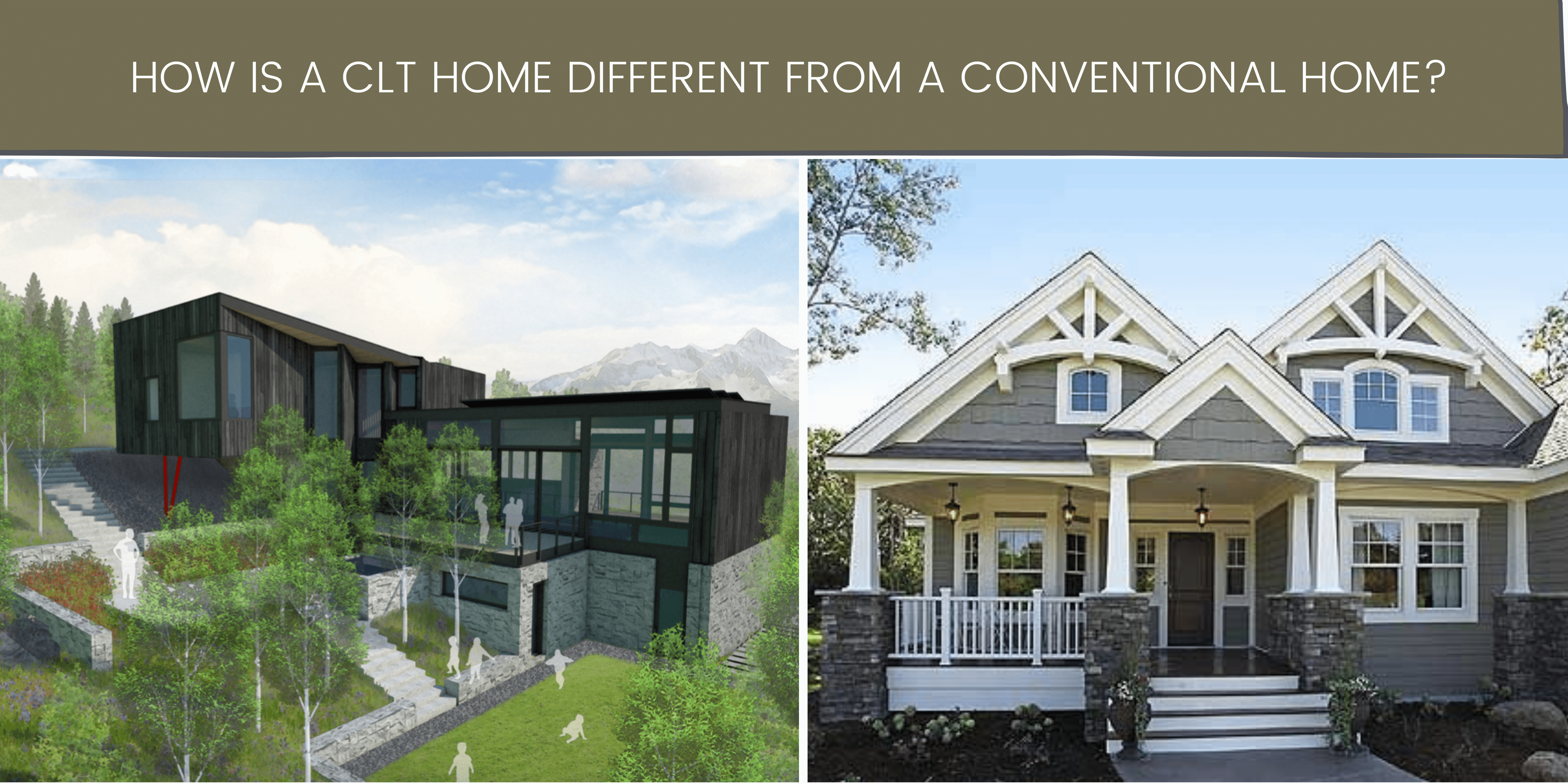
How is a CLT Home Different From a Conventional Home?
With any relatively new technology comes doubts, apprehensions and questions. CLT houses are still a novelty, and are generally not as ubiquitous as traditional and conventional homes. However, with the benefits CLT can offer, lack of information shouldn’t deter you from considering a CLT home. In this article, we will tackle some of the myths about CLT homes and highlight its difference from a conventional home.
MYTH 1: CLT Homes Are Untested
While it might not have as many years of proven durability and strength as a traditional home, CLT homes are backed by extensive research and a growing network of built structures. In fact, a CLT home is similar to older log houses, continuing a long history of wood construction in home building. Wood has been used as a construction material for centuries – we know how it works and we are used to living in it. Due to its versatility and efficiency as a building material, along with its aesthetic quality, CLT is increasingly used for building houses and is quickly becoming the future of construction.
MYTH 2: CLT requires more maintenance that a conventional home
Any building requires maintenance. Generally, higher upfront costs relate to lower maintenance expenses and vice versa. CLT has great durability and as such, can increase the longevity of your home. The key to its durability is preventing exposure to moisture. As such, proper exterior detailing of your home could extend its life cycle and reduce any potential maintenance.
MYTH 3: A Modular CLT Home Looks and Feels Standardized
The beauty of CLT is its versatility. This means that it actually pushes the boundaries of form. Its modularity does not necessarily mean that you’ll be in a cookie-cutter home. In fact, a CLT home, with its wood aesthetic, can create a home that is soulful, healthy and inviting. CLT homes are of higher quality and can achieve an authentic and rich interior expression. The exposed timber construction can also give good acoustic qualities and air tightness. They also open up modern aesthetic opportunities for exposed, rich and robust self-finishing interior surfaces.
Nonetheless, CLT still has key differences from a conventional home. These include:
1) Construction Duration and Process
As mentioned in previous articles, using CLT can get you into your home faster. They require less building time and less manpower than a conventional home. Furthermore, modular construction methods would be used when building a CLT home, equating into a more efficient process. However, it’s important to note that while CLT can indeed save you both time and money, the difference might be marginal compared to the savings in larger building types.
2) Code Compliance
When building a conventional home, the code compliance process is generally standard depending on your state. On the other hand, currently CLT is designated as a unique structural material that must be approved individually if corresponding code provisions cannot be found. CLT is still not as prevalent in the US as it is in Europe. However, they are already part of the International Building Code and projects using CLT panels will be compliant when they meet or exceed the minimum design capacities that are specified in the ANSI/APA PRG 320.
3) Structural and Sustainability Properties
CLT has great seismic durability which means that a CLT home is much more structurally stable. CLT construction opens up opportunities for structural simplicity and due to its precision, HVAC and plumbing systems fit more smoothly within the home. A CLT home would also have good sustainability as it is sourced from sustainably grown forests and has a lighter environmental footprint.
A new material does not have to be daunting. CLT can offer massive opportunities not only for cost savings but also for the durability and overall aesthetics of your home. Join us as we explore the opportunities of a CLT home.
